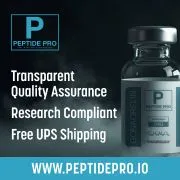Body Protective Compound 157 (BPC-157) is a synthetic peptide derived from a naturally occurring protein called Body Protection Compound (BPC). BPC-157 consists of 15 amino acids and has been the subject of research for its potential therapeutic properties, particularly in relation to tissue repair and healing.
BPC-157 was initially identified for its role in the protection and healing of the gastrointestinal tract. It has demonstrated gastroprotective effects by promoting the healing of gastric ulcers and injuries in animal studies. However, further research has expanded its potential applications beyond the gastrointestinal system.
Studies on animals and in vitro experiments suggest that BPC-157 may have a wide range of healing properties. It has shown to accelerate the healing of various tissues, including tendons, ligaments, muscles, and bones. BPC-157 is believed to stimulate the formation of blood vessels (angiogenesis), enhance collagen production, and promote cell survival, which are all crucial factors in the healing process.
The exact mechanism of action of BPC-157 is not yet fully understood. However, it is thought to interact with multiple biological pathways, such as growth factor signaling, regulation of inflammation, and tissue regeneration. It may also have protective effects against oxidative stress and modulate the immune response.
It is important to note that the majority of research on BPC-157 has been conducted on animal models, and there is limited clinical evidence available in humans. Therefore, while BPC-157 shows promise in preclinical studies, further research is needed to establish its efficacy and safety in humans.
As with any peptide or therapeutic compound, it is crucial to consult with a qualified healthcare professional before considering the use of BPC-157. They can provide personalized guidance and ensure that it is appropriate for your specific circumstances.is a synthetic peptide derived from a naturally occurring protein called Body Protection Compound (BPC). BPC-157 consists of 15 amino acids and has been the subject of research for its potential therapeutic properties, particularly in relation to tissue repair and healing.
BPC-157 was initially identified for its role in the protection and healing of the gastrointestinal tract. It has demonstrated gastroprotective effects by promoting the healing of gastric ulcers and injuries in animal studies. However, further research has expanded its potential applications beyond the gastrointestinal system.
Studies on animals and in vitro experiments suggest that BPC-157 may have a wide range of healing properties. It has shown to accelerate the healing of various tissues, including tendons, ligaments, muscles, and bones. BPC-157 is believed to stimulate the formation of blood vessels (angiogenesis), enhance collagen production, and promote cell survival, which are all crucial factors in the healing process.
The exact mechanism of action of BPC-157 is not yet fully understood. However, it is thought to interact with multiple biological pathways, such as growth factor signaling, regulation of inflammation, and tissue regeneration. It may also have protective effects against oxidative stress and modulate the immune response.
It is important to note that the majority of research on BPC-157 has been conducted on animal models, and there is limited clinical evidence available in humans. Therefore, while BPC-157 shows promise in preclinical studies, further research is needed to establish its efficacy and safety in humans.
As with any peptide or therapeutic compound, it is crucial to consult with a qualified healthcare professional before considering the use of BPC-157. They can provide personalized guidance and ensure that it is appropriate for your specific circumstances.
BPC-157 was initially identified for its role in the protection and healing of the gastrointestinal tract. It has demonstrated gastroprotective effects by promoting the healing of gastric ulcers and injuries in animal studies. However, further research has expanded its potential applications beyond the gastrointestinal system.
Studies on animals and in vitro experiments suggest that BPC-157 may have a wide range of healing properties. It has shown to accelerate the healing of various tissues, including tendons, ligaments, muscles, and bones. BPC-157 is believed to stimulate the formation of blood vessels (angiogenesis), enhance collagen production, and promote cell survival, which are all crucial factors in the healing process.
The exact mechanism of action of BPC-157 is not yet fully understood. However, it is thought to interact with multiple biological pathways, such as growth factor signaling, regulation of inflammation, and tissue regeneration. It may also have protective effects against oxidative stress and modulate the immune response.
It is important to note that the majority of research on BPC-157 has been conducted on animal models, and there is limited clinical evidence available in humans. Therefore, while BPC-157 shows promise in preclinical studies, further research is needed to establish its efficacy and safety in humans.
As with any peptide or therapeutic compound, it is crucial to consult with a qualified healthcare professional before considering the use of BPC-157. They can provide personalized guidance and ensure that it is appropriate for your specific circumstances.is a synthetic peptide derived from a naturally occurring protein called Body Protection Compound (BPC). BPC-157 consists of 15 amino acids and has been the subject of research for its potential therapeutic properties, particularly in relation to tissue repair and healing.
BPC-157 was initially identified for its role in the protection and healing of the gastrointestinal tract. It has demonstrated gastroprotective effects by promoting the healing of gastric ulcers and injuries in animal studies. However, further research has expanded its potential applications beyond the gastrointestinal system.
Studies on animals and in vitro experiments suggest that BPC-157 may have a wide range of healing properties. It has shown to accelerate the healing of various tissues, including tendons, ligaments, muscles, and bones. BPC-157 is believed to stimulate the formation of blood vessels (angiogenesis), enhance collagen production, and promote cell survival, which are all crucial factors in the healing process.
The exact mechanism of action of BPC-157 is not yet fully understood. However, it is thought to interact with multiple biological pathways, such as growth factor signaling, regulation of inflammation, and tissue regeneration. It may also have protective effects against oxidative stress and modulate the immune response.
It is important to note that the majority of research on BPC-157 has been conducted on animal models, and there is limited clinical evidence available in humans. Therefore, while BPC-157 shows promise in preclinical studies, further research is needed to establish its efficacy and safety in humans.
As with any peptide or therapeutic compound, it is crucial to consult with a qualified healthcare professional before considering the use of BPC-157. They can provide personalized guidance and ensure that it is appropriate for your specific circumstances.










